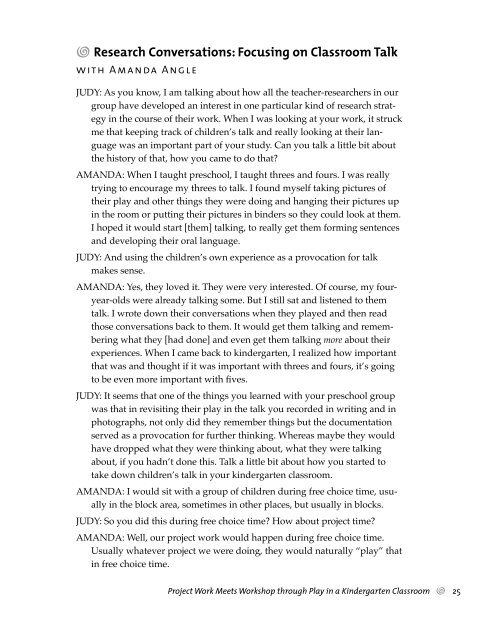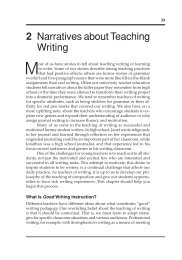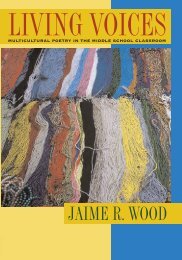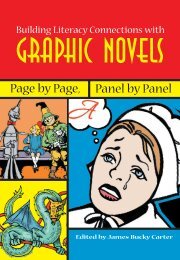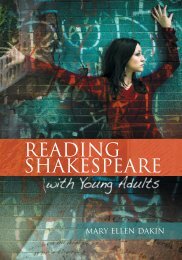View a Sample Chapter - National Council of Teachers of English
View a Sample Chapter - National Council of Teachers of English
View a Sample Chapter - National Council of Teachers of English
- No tags were found...
You also want an ePaper? Increase the reach of your titles
YUMPU automatically turns print PDFs into web optimized ePapers that Google loves.
D Research Conversations: Focusing on Classroom Talkwith Amanda AngleJudy: As you know, I am talking about how all the teacher-researchers in ourgroup have developed an interest in one particular kind <strong>of</strong> research strategyin the course <strong>of</strong> their work. When I was looking at your work, it struckme that keeping track <strong>of</strong> children’s talk and really looking at their languagewas an important part <strong>of</strong> your study. Can you talk a little bit aboutthe history <strong>of</strong> that, how you came to do that?Amanda: When I taught preschool, I taught threes and fours. I was reallytrying to encourage my threes to talk. I found myself taking pictures <strong>of</strong>their play and other things they were doing and hanging their pictures upin the room or putting their pictures in binders so they could look at them.I hoped it would start [them] talking, to really get them forming sentencesand developing their oral language.Judy: And using the children’s own experience as a provocation for talkmakes sense.Amanda: Yes, they loved it. They were very interested. Of course, my fouryear-oldswere already talking some. But I still sat and listened to themtalk. I wrote down their conversations when they played and then readthose conversations back to them. It would get them talking and rememberingwhat they [had done] and even get them talking more about theirexperiences. When I came back to kindergarten, I realized how importantthat was and thought if it was important with threes and fours, it’s goingto be even more important with fives.Judy: It seems that one <strong>of</strong> the things you learned with your preschool groupwas that in revisiting their play in the talk you recorded in writing and inphotographs, not only did they remember things but the documentationserved as a provocation for further thinking. Whereas maybe they wouldhave dropped what they were thinking about, what they were talkingabout, if you hadn’t done this. Talk a little bit about how you started totake down children’s talk in your kindergarten classroom.Amanda: I would sit with a group <strong>of</strong> children during free choice time, usuallyin the block area, sometimes in other places, but usually in blocks.Judy: So you did this during free choice time? How about project time?Amanda: Well, our project work would happen during free choice time.Usually whatever project we were doing, they would naturally “play” thatin free choice time.Project Work Meets Workshop through Play in a Kindergarten Classroom D 25


